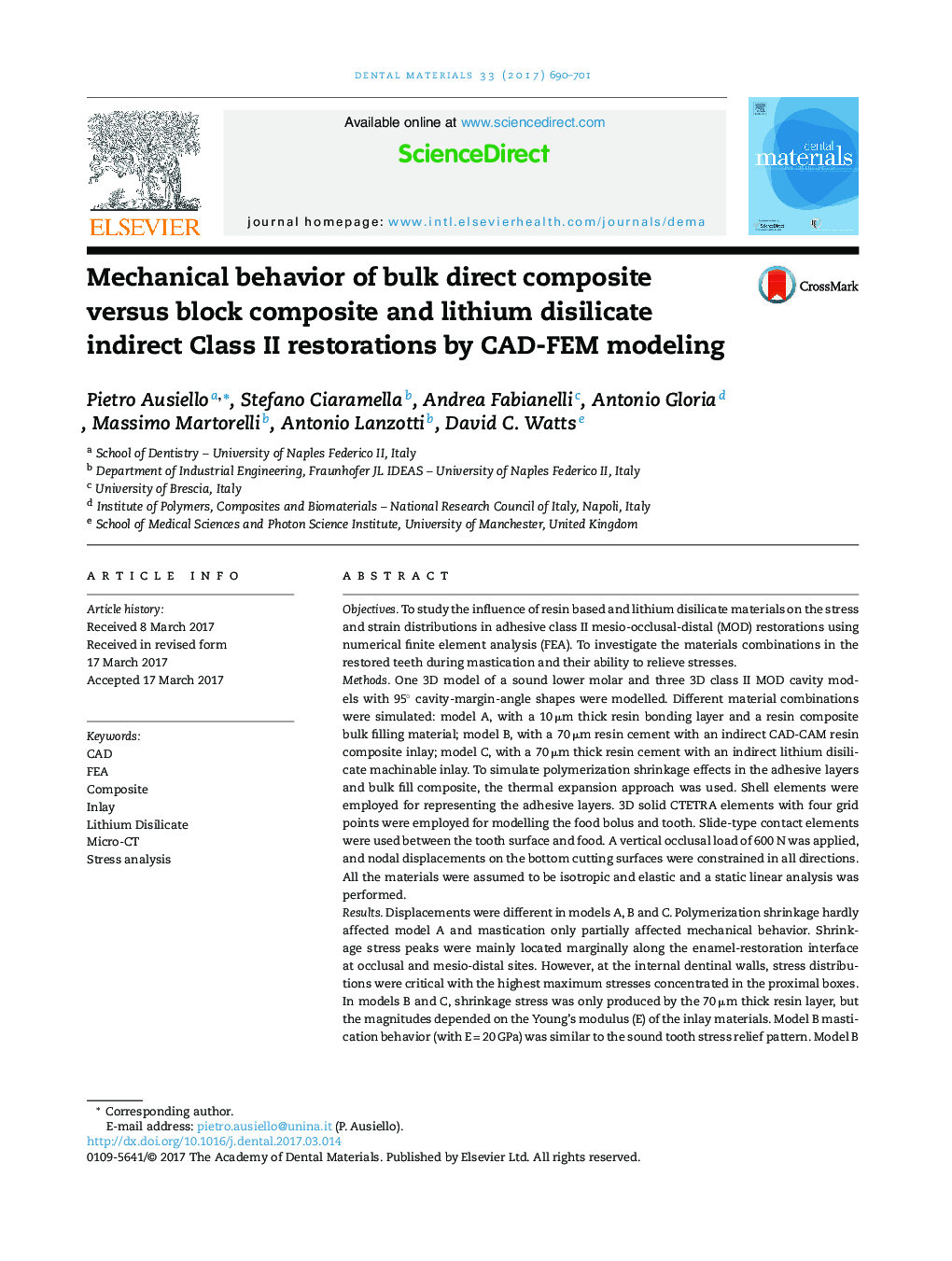| کد مقاله | کد نشریه | سال انتشار | مقاله انگلیسی | نسخه تمام متن |
|---|---|---|---|---|
| 5432921 | 1398047 | 2017 | 12 صفحه PDF | دانلود رایگان |

ObjectivesTo study the influence of resin based and lithium disilicate materials on the stress and strain distributions in adhesive class II mesio-occlusal-distal (MOD) restorations using numerical finite element analysis (FEA). To investigate the materials combinations in the restored teeth during mastication and their ability to relieve stresses.MethodsOne 3D model of a sound lower molar and three 3D class II MOD cavity models with 95° cavity-margin-angle shapes were modelled. Different material combinations were simulated: model A, with a 10 μm thick resin bonding layer and a resin composite bulk filling material; model B, with a 70 μm resin cement with an indirect CAD-CAM resin composite inlay; model C, with a 70 μm thick resin cement with an indirect lithium disilicate machinable inlay. To simulate polymerization shrinkage effects in the adhesive layers and bulk fill composite, the thermal expansion approach was used. Shell elements were employed for representing the adhesive layers. 3D solid CTETRA elements with four grid points were employed for modelling the food bolus and tooth. Slide-type contact elements were used between the tooth surface and food. A vertical occlusal load of 600 N was applied, and nodal displacements on the bottom cutting surfaces were constrained in all directions. All the materials were assumed to be isotropic and elastic and a static linear analysis was performed.ResultsDisplacements were different in models A, B and C. Polymerization shrinkage hardly affected model A and mastication only partially affected mechanical behavior. Shrinkage stress peaks were mainly located marginally along the enamel-restoration interface at occlusal and mesio-distal sites. However, at the internal dentinal walls, stress distributions were critical with the highest maximum stresses concentrated in the proximal boxes. In models B and C, shrinkage stress was only produced by the 70 μm thick resin layer, but the magnitudes depended on the Young's modulus (E) of the inlay materials. Model B mastication behavior (with E = 20 GPa) was similar to the sound tooth stress relief pattern. Model B internally showed differences from the sound tooth model but reduced maximum stresses than model A and partially than model C. Model C (with E = 70 GPa) behaved similarly to model B with well redistributed stresses at the occlusal margins and the lateral sides with higher stress concentrations in the proximal boxes. Models B and C showed a more favorable performance than model A with elastic biomechanics similar to the sound tooth model.SignificanceBulk filling resin composite with 1% linear polymerization shrinkage negatively affected the mechanical behavior of class II MOD restored teeth. Class II MOD direct resin composite showed greater potential for damage because of higher internal and marginal stress evolution during resin polymerization shrinkage. With a large class II MOD cavity an indirect composite or a lithium disilicate inlay restoration may provide a mechanical response close to that of a sound tooth.
Journal: Dental Materials - Volume 33, Issue 6, June 2017, Pages 690-701